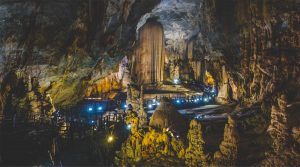The Phong Nha Botanic Garden offers a unique opportunity for travelers who want to experience the lush, tropical beauty of Phong Nha National Park without the need for a guide. This 40-hectare expanse is home to a diverse range of plant species and provides a chance to trek through the real jungle at your own pace.
While the name might suggest a carefully manicured garden, it’s quite the opposite—this is the wild jungle, where visitors can explore a natural landscape filled with towering trees, cascading waterfalls, and vibrant wildlife. Perfect for solo adventurers or anyone looking for a peaceful retreat into nature, the Phong Nha Botanic Garden is an ideal spot for a self-guided jungle trek.
- What is Phong Nha Botanic Garden?
- How to get there
- Best things to do
- Trekking routes
- Best time to visit
- What to bring
What is Phong Nha Botanic Garden?
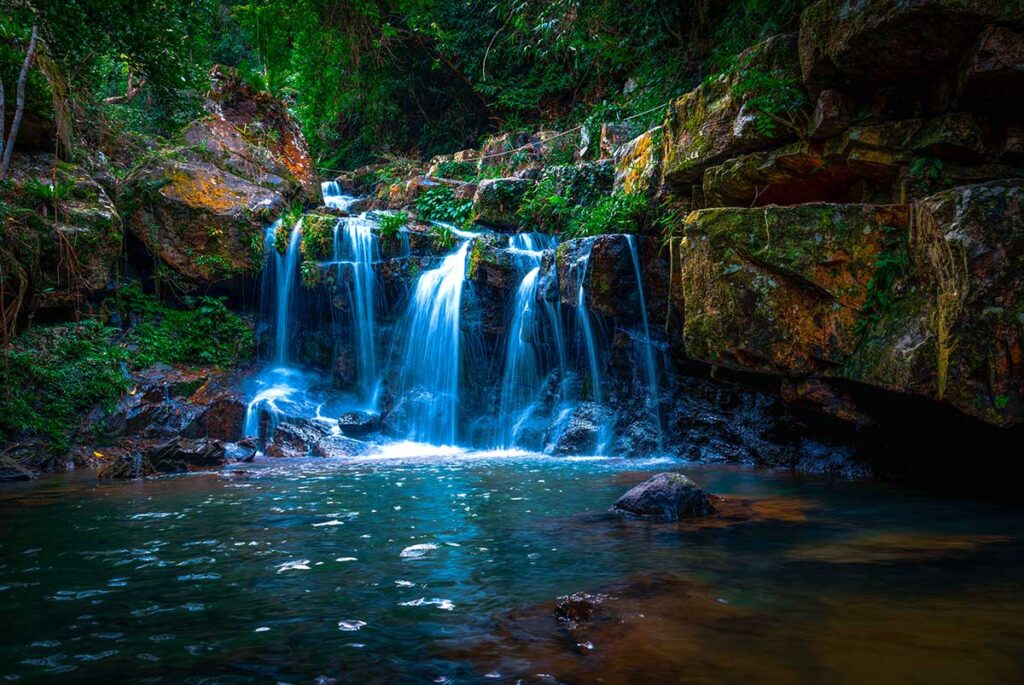
The name Phong Nha Botanic Garden can be a bit misleading. When you hear “botanic garden,” you might imagine neatly arranged flower beds, trimmed hedges, and fruit trees on display. But this is far from the reality of what awaits you. Instead, this garden is a section of the real jungle within Phong Nha National Park. It’s a fantastic place to experience authentic nature, and one of the few spots where you can hike through the jungle without a guide. If you enjoy solo exploration, this 40-hectare garden, home to over 500 plant species, is perfect for you. Here, you can immerse yourself in dense tropical forests and discover the rich biodiversity that makes Phong Nha so special.
How to get there
Location
The Phong Nha Botanic Garden is located inside Phong Nha National Park, right along the main road that crosses the park. It’s around 10 kilometers from Son Trach town, which is the main hub for travelers visiting the national park. The drive to the garden takes about 20 minutes, making it an easy day trip from the town.
Getting there
There are no taxis available near the Phong Nha Botanic Garden, so it’s best to arrange private transportation beforehand, which can also be used to explore other parts of the park.
Driving a motorbike: Renting a motorbike is one of the most popular options for getting around the Phong Nha area. Motorbike rentals typically cost between 100,000 and 150,000 VND per day. The traffic is very light in the park, making it a safe option for those with a valid license and experience.
Car with a driver: You can hire a private car and driver to take you to the garden. The driver can either wait for you while you explore or take you on a full-day tour of the park’s other attractions. This is a more comfortable option, especially if you plan to visit multiple spots.
Entrance
Upon arrival, you will receive an English-language map of the entire garden area when you sign in. The entrance fee is 40,000 VND, which includes the map. If you’re riding a motorbike, there’s a parking fee of 5,000 VND.
Best things to do in Phong Nha Botanic Garden
1. Trekking through the real jungle
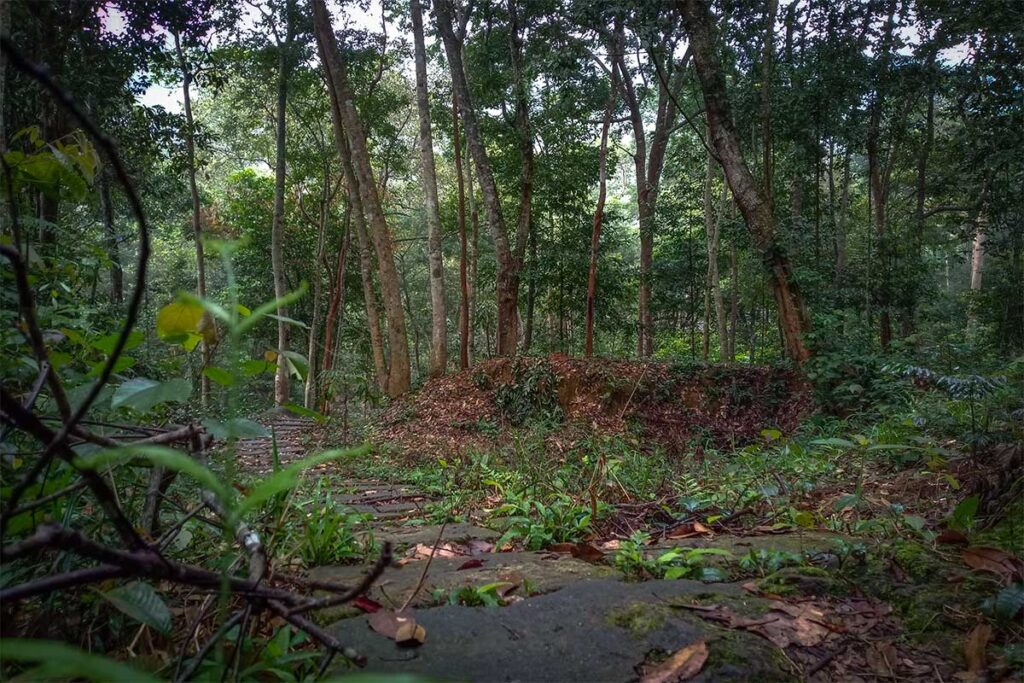
One of the best aspects of the Phong Nha Botanic Garden is that it offers the rare opportunity to trek through the jungle without a guide. The lush tropical forest here is absolutely breathtaking, and the designated trails are easy to follow, so there’s no need to worry about getting lost.
As you walk, you’ll be surrounded by incredible biodiversity, with hundreds of plant species and signs identifying the most notable ones. Keep an eye out for the beautiful orchids and exotic birds that inhabit the area, and take a moment to admire the 100-year-old Sao trees. Some parts of the trek require a bit of light bouldering over rocks, which can be slippery, but there are rope handrails to help.
There are three trails available to explore—read more about them in the next section here.
2. Exploring waterfalls

At the end of your trek, you’ll come across the stunning Thac Gio Waterfall. This 30-meter-high waterfall is a rewarding sight after your jungle walk, and you can spend some time here relaxing by the water and soaking in the natural beauty. The powerful cascade of cool, refreshing water is a perfect way to cool off after a warm hike.
3. Taking a dip in natural pools
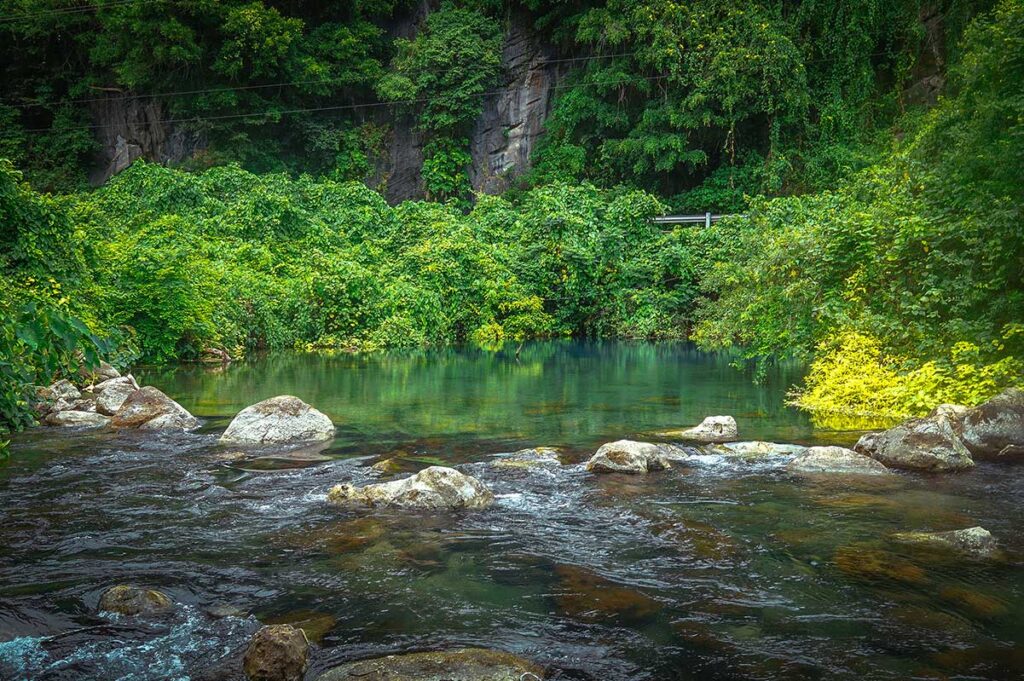
After a steamy trek, cool down with a refreshing dip in Vang Anh Lake, a natural pool with fresh, clear blue water. Located within the botanic garden, it’s a great spot to relax and swim amidst nature’s beauty.
4. Enjoy the viewpoint
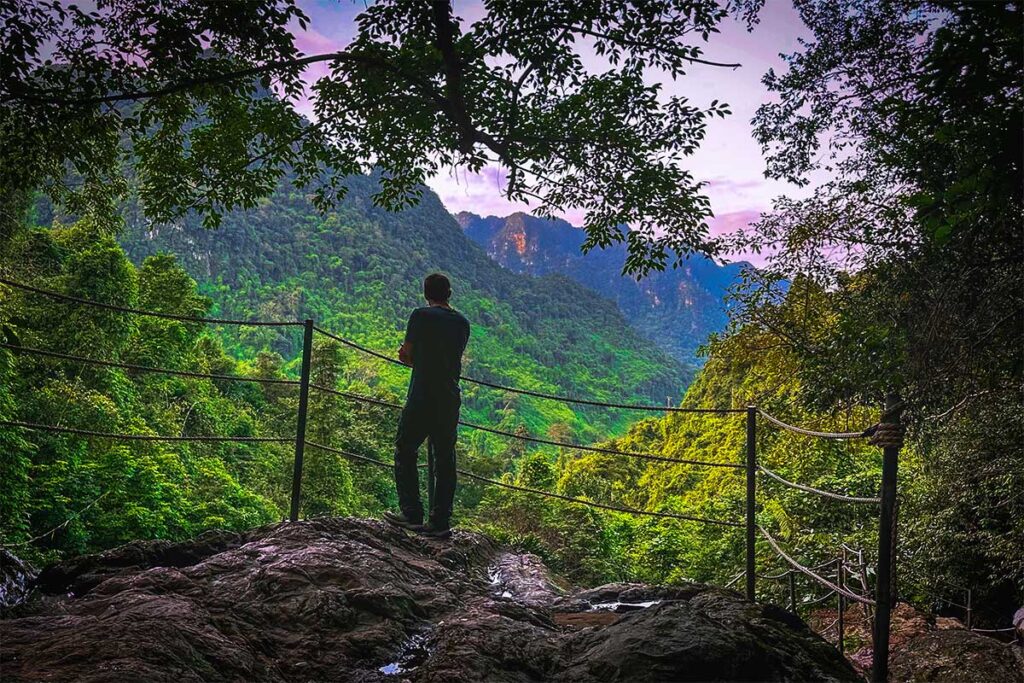
Though not an official viewpoint, near the waterfall you’ll find a higher vantage point where you can overlook the dense jungle canopy and the surrounding mountains.

This spot gives you a stunning view of the vast, untouched wilderness of Phong Nha, making you feel like you’re in the heart of the jungle.
5. Visit the Wildlife Enclosure
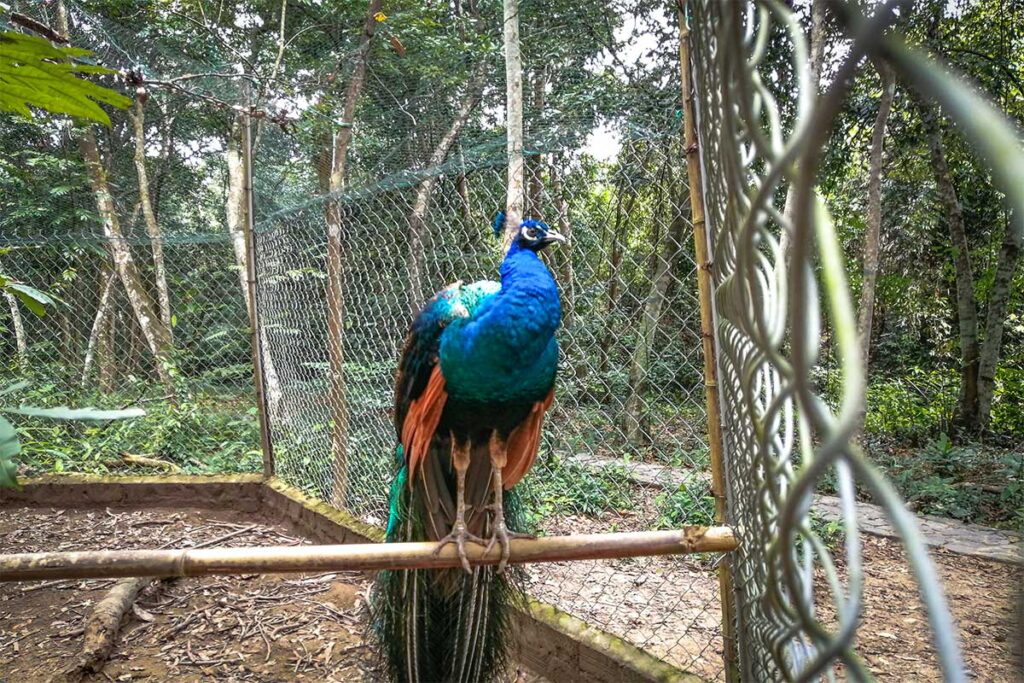
The Wildlife Enclosure inside the garden is a fantastic place to see some of Vietnam’s native animals, including langurs and other local wildlife. It offers a chance to learn about conservation efforts and see animals in a more natural setting.

5. Learning about plants and wildlife
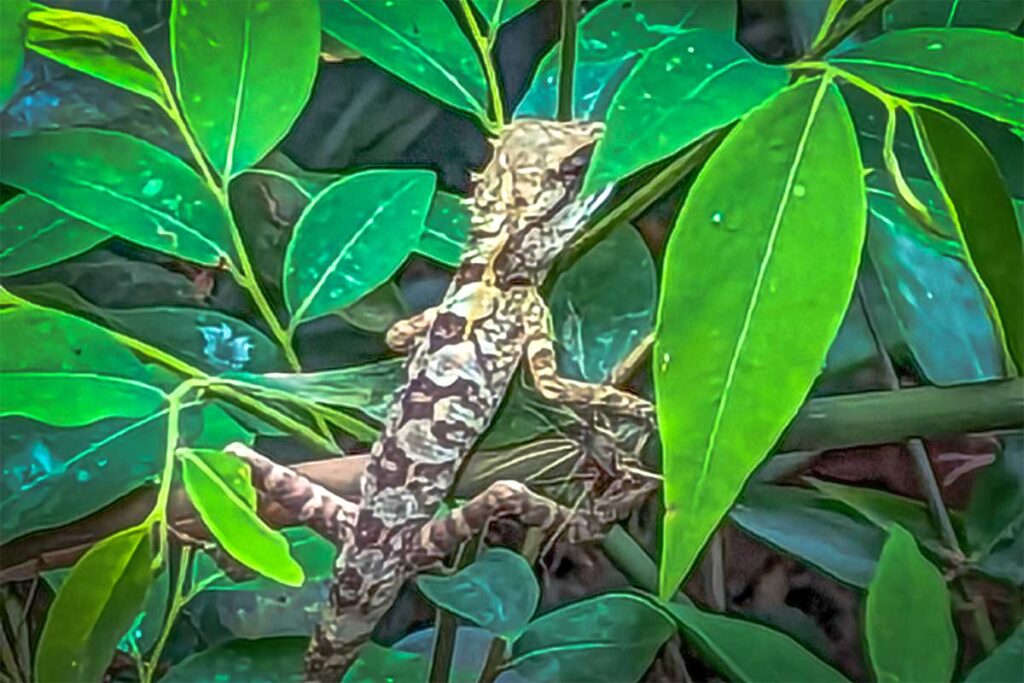
Throughout the garden, there are numerous signs and informational boards detailing the various plant species and wildlife you’ll encounter. This makes it an educational as well as a scenic experience, allowing you to gain a deeper understanding of the ecosystem.
Trekking routes in Phong Nha Botanic Garden
There are three different trekking routes within the Phong Nha Botanic Garden, each offering a unique experience. Whether you’re looking for a short walk or a more immersive jungle trek, you’ll find a route that suits your preferences.
Route 1: Waterfall only (40 minutes)
If your primary interest is seeing the Thac Gio Waterfall, this shorter route will take you directly there. It’s a relatively easy trek that takes around 25-40 minutes, depending on your pace and trekking experience. This route is perfect if you’re short on time but still want to experience the garden’s natural beauty.
Route 2: Lake and Waterfall (1 hour 30 minutes)
The second route gives you the chance to enjoy both the Vang Anh Lake and the Thac Gio Waterfall. This route is a bit longer, taking about 1 hour and 30 minutes, but it allows you to experience two of the main highlights of the botanical garden. You can take a break for a swim at the lake before continuing to the waterfall.
Route 3: Full jungle trek (3 hours)
For those who want a more adventurous experience, the third route adds a full loop through the jungle to the previous trek. This path takes you deeper into the jungle and gives you a complete experience of the Phong Nha Botanic Garden’s ecosystem. The trek takes around 3 hours and offers a more immersive and challenging adventure for nature lovers.
Best time to visit Phong Nha Botanic Garden
The best time to visit Phong Nha Botanic Garden is during the dry season, from March to August. During these months, the trails are dry and easy to walk, and you won’t have to worry about rain. However, be prepared for hot and humid weather, especially in the peak summer months. One downside is that the waterfall may not be as impressive, as the flow is much smaller during the dry season.
If you visit during the wet season, from September to November, you’ll encounter more rain, which can make the trails muddy and slippery. But on the flip side, the scenery is at its best—everything is lush and green, and the waterfall is at full strength, making for a spectacular sight.
For the best of both worlds, consider visiting at the beginning or end of the dry season (February or late August). The weather is more manageable, and you might still catch the waterfall in full flow without dealing with heavy rain.
What to bring
- Good walking shoes: The trails can be rugged, so sturdy footwear is essential, especially if you plan on doing the longer treks.
- Swimming shorts: If you want to take a dip in Vang Anh Lake or cool off at the waterfall, bring swimwear.
- Mosquito repellent: The jungle is home to plenty of mosquitoes, so make sure to protect yourself, especially during the wet season.
- Snacks & water: There are no shops inside the botanic garden, so bring some snacks and water for your hike.
- Cash: Bring enough cash to cover the entrance fee and any local restaurants you may stop by while exploring the national park.


